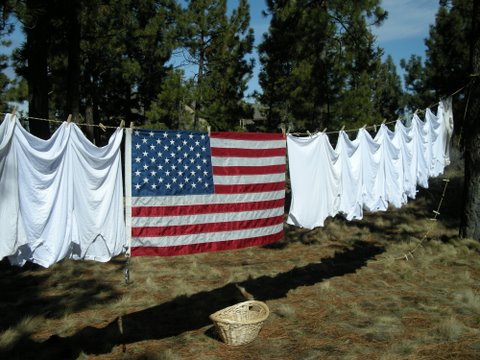Editor’s Note: We’ve said it before: California’s 12-second rule, a state flammability standard for foam-containing furniture, induces manufacturers to load their products with chemical flame retardants. It’s a stupid rule: it contaminates tens of millions of homes across North America with toxic substances — compounds that spread, harming people and animals. Of all the toxic industrial compounds in your body right now, a substantial share are flame retardants that came from foam furnishings — probably a larger share than any other category of industrial compounds. In other words, the 12-second rule is printing out, right now, in the chemistry of your body. But the rule has no compensating benefit for fire safety. The 12-second rule does not save lives in fires. It is useless. That’s what the scientific evidence says. This rule is all pain, no gain.
But in April 2011, a California senate committee voted eight to one to sustain the rule, rejecting the Consumer Choice Fire Protection Act. Eight to one! Liberals and conservatives united to oppose a mild reform that would have allowed manufacturers to satisfy either the unchanged 12-second rule (exposing foam to a candle flame for 12 seconds without it igniting) or a different flammability test, one that relies on the best fire science. What convinced them? We suspect it was the tens of millions of dollars chemical manufacturers spent on lobbying and campaign contributions. But let’s give the legislators the benefit of the doubt. What might they have heard that swayed them?
Sightline Intern Valerie Pacino, a Master of Public Health student, has investigated. She watched every minute of public testimony on the bill (here at 01:18:45 and here) and read all the statements pro and con entered into the official record. She found surprisingly few arguments voiced in support of the 12-second rule and an avalanche of arguments against it.
But she did find one compelling testimonial for the 12-second rule. It was that of a witness from her own university, the University of Washington in Seattle — an argument made by a decorated burn doctor named David Heimbach. Dr. Heimbach has dedicated his life to caring for victims of fire. Lauded by no lesser a humanitarian than the Dalai Lama, Dr. Heimbach was the star witness for flame retardants. His testimony (which you can watch here at 00:05:18) was artful and heartfelt. It was also, as Valerie details below, either deceptive or uninformed. (We asked Dr. Heimbach for a meeting to discuss this issue, but he has not replied.) –Alan Durning
You might think adding slow-to-burn compounds to upholstered furnishings, the largest single fuel load in many homes, would be a worthy precaution, a defense against house fires, and a lifesaver for thousands of people. It’s an understandable assumption, an intuitive one. Though Dr. Heimbach never questions or even explicitly mentions this assumption, it lurks beneath the surface of what he argued in Sacramento. So I checked the science.
Read more













